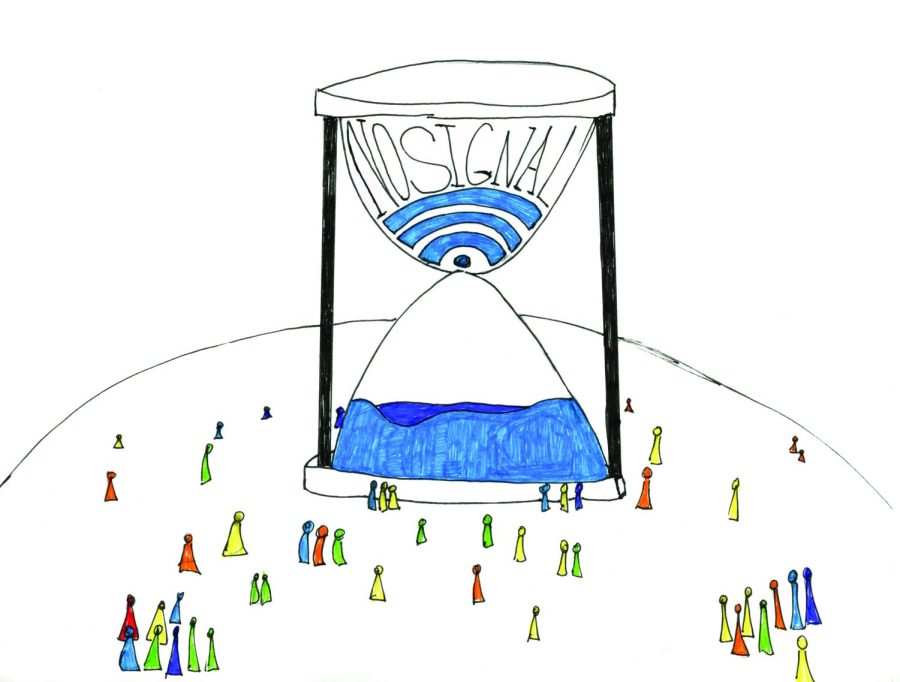Staff Editorial: If wifi won’t work, we should work where it will
Artist Statement: I drew free hand on white laser printer paper. I used markers for the color. The drawing was scanned on a flatbed scanner and brought into PhotoShop where I cleaned up stray marks and enhanced the contrast
Apr 11, 2023
Coming back from a long break from school to a building filled with blank, lagging laptops can be an aggravating experience, to put it simply. Recently, a good 15 to 20 minutes of every class was experiencing internet issues. Instructional time was spent restarting laptops, taking trips to the tech office, and watching the wheel spin as kids clicked through their available network options. This wasted time could have easily been avoided if students were able to stay home and work. Even in the rare instance where a few students’ internet connections began to work, the rest of the class was left stressed out and struggling, trying to catch up with students who got that head start from pure luck. It is not fun being a part of that cluster in class shutting down their computers for the millionth time, knowing that the one assignment they are being handed could be finished in 20 minutes at a place with a solid internet status.
With student chatter and teachers struggling to adjust their lesson plans, it begins to feel like the school day is being wasted, with absolutely nothing for students and teachers to do but wait and hope for a connection strong enough for one to enter Google Classroom. During the school days riddled with technology issues, it’s only natural for someone to wonder how much easier it would be to be able to go home, open up their laptop, and complete their assignments without any hassle. If the place you are supposed to be learning in isn’t allowing you to learn, why shouldn’t you be able to complete your homework somewhere else?
E-Learning days are no longer a foreign, once-in-a-snow-day concept to most students. It goes without saying that COVID-19 taught students how to participate in Zoom calls, work on Google Doc assignments, and directly communicate with their teachers from the comfort of their own homes. Being allowed to head home for the day and work on assignments quickly and efficiently instead of hanging around the internet-barren school corridors would make teachers’ and students’ lives easier. Both students and teachers know what to do and know what is expected of online learning at this point, which should be taken advantage of. In a day and age where most assignments are to be completed online, there is no harm in granting e-learning days to students who at most will be missing in-person lectures that they can catch up on when returning to school. In the grand scheme of things, a few school days a semester being moved to students’ homes wouldn’t affect their understanding of the material. Being away from school could also be beneficial to the staff working hard to fix the Wi-Fi problems. There wouldn’t be a massive student body scrambling to get into a half-broken network, and fewer people complaining and sending their laptops down for help in irritation.
Giving E-learning days on bad Wi-Fi days gives tech employees the time and effort they need to take care of the issue that is preventing any typical education from ensuing. A majority of students sat around, refreshing their browsers and even trying their stagnant cellphones for entire class periods, having to complete their work later at home anyway. If a whole school day was given to do that remotely, that work wouldn’t have had to become homework and could have been completed a lot sooner.
The speed, effectiveness, and convenience all prove remote learning to be a great solution to days with slow, overworked school Wi-Fi. A day away from the physical classroom can be more beneficial than harmful for students looking to get their work done. Without the distraction of deteriorating internet connectivity, and class outrage, school days could be productive once more from people’s reliable, Wi-Fi servicing living rooms.



